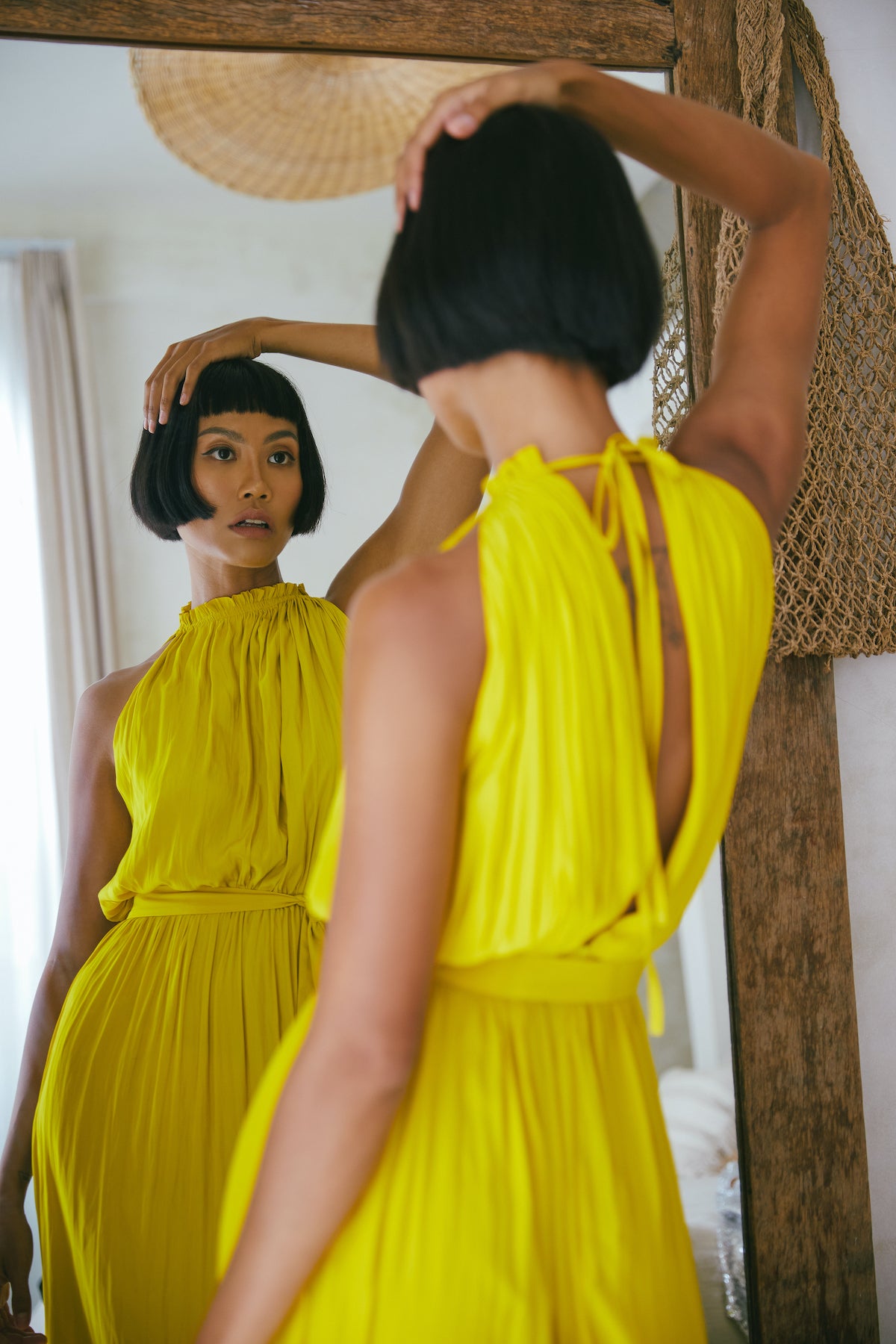What is the allure of undress? Why does the concept captivate our imagination, transcending mere fashion or modesty to delve into realms of artistry and self-expression? The answer lies in the transformative power of undress. It is not merely about shedding layers of fabric but unveiling facets of identity, confidence, and individuality. This phenomenon is epitomized by creations such as the Brown Satin Cowl Neck Midi Dress KAMEA from UNDRESS—a garment that embodies elegance and femininity with its tawny brown hue, blending the warmth of gold and the sweetness of honey. Such pieces transcend their functional purpose, becoming symbols of aesthetic brilliance.
The idea of undress permeates various aspects of life, influencing how we perceive ourselves and others. For instance, when discussing the act of undressing in therapeutic settings, respect remains paramount. Therapists emphasize privacy and dignity during sessions, ensuring clients feel safe and comfortable. Similarly, historical narratives often explore themes of undress—not just physical but metaphorical—to reveal deeper truths about human nature. Susan Jane Gilman's memoir Undress Me in the Temple of Heaven delves into this duality, chronicling a journey marked by ambition, challenges, and transformation. Through vivid storytelling, she unravels layers of personal and societal expectations, offering readers an intimate glimpse into her world.
| Bio Data & Personal Information | Career & Professional Information |
|---|---|
| Name: Susan Jane Gilman | Profession: Author, Memoirist |
| Date of Birth: Not disclosed publicly | Notable Works: Undress Me in the Temple of Heaven |
| Place of Origin: United States | Awards: Bestselling author accolades |
| Education: Details undisclosed | Website: Amazon Profile |
In contemporary discussions, the concept of undress extends beyond literal interpretations. How individuals choose to present themselves—whether through attire or behavior—can significantly impact success and self-assurance. In his piece titled How to Undress for Success, Jeff highlights barriers like uncertainty and lack of confidence that hinder personal growth. By addressing these issues, one can embrace vulnerability as a strength rather than a weakness. This philosophy aligns closely with modern perspectives on empowerment, encouraging people to shed inhibitions and pursue their goals fearlessly.
Fashion terminology further enriches the discourse surrounding undress. Terms like undress itself refer to casual gowns designed for relaxed settings at home. Such definitions underscore the versatility of clothing, emphasizing its role in shaping mood and context. On platforms dedicated to artistic expression, creators like Kara Marie Trombetta redefine undress through visual storytelling. Her work explores themes of nudity as natural and poetic, challenging conventional norms while celebrating authenticity. Each photograph becomes a testament to the beauty of embracing oneself fully, unencumbered by external judgments.
Moreover, the interplay between literature and visual arts amplifies the significance of undress. As noted earlier, Gilman's memoir serves as both confessional narrative and cultural critique. Meanwhile, photographers like Trombetta translate similar ideas into imagery, creating synergistic expressions that resonate deeply with audiences. Together, they dismantle preconceived notions about modesty and propriety, advocating instead for honesty and openness.
It is worth noting that the evolution of undress reflects broader societal shifts toward inclusivity and acceptance. Today, individuals are encouraged to experiment with styles that reflect their true selves, irrespective of traditional constraints. Brands like UNDRESS cater to this demand by offering garments that celebrate feminine grace without compromising comfort or practicality. Their signature Brown Satin Draped Front Dress exemplifies this approach, combining luxurious textures with sophisticated design elements.
As conversations around undress continue evolving, so too will our understanding of its implications. From therapy rooms to literary circles, from fashion runways to digital galleries, the theme persists as a powerful motif exploring identity, freedom, and creativity. Ultimately, it invites us to reconsider what it means to be fully clothed—or unclothed—in every sense of the word.
Within this framework, the exploration of undress takes on new dimensions. Consider the philosophical musings accompanying Trombetta's photography: The soul is always naked, I think. Such statements challenge viewers to look beyond surface appearances and recognize the inherent truth beneath. They remind us that true undress occurs not when clothes fall away but when barriers of doubt and hesitation dissolve, leaving only pure essence behind.
This perspective finds resonance across disciplines. Whether in literature, where authors strip away pretense to expose raw emotion, or in therapy, where practitioners foster environments conducive to genuine communication, the principle remains constant. Undress, therefore, becomes less about physical states and more about emotional liberation—an invitation to step boldly into spaces previously deemed inaccessible.
In conclusion, the multifaceted nature of undress warrants ongoing examination. Its manifestations span diverse fields, each contributing unique insights into human experience. From fashion trends redefining elegance to memoirs chronicling personal journeys, the theme continues inspiring innovation and introspection alike. As society progresses, embracing undress in all its forms may prove instrumental in fostering greater empathy and understanding among individuals worldwide.

